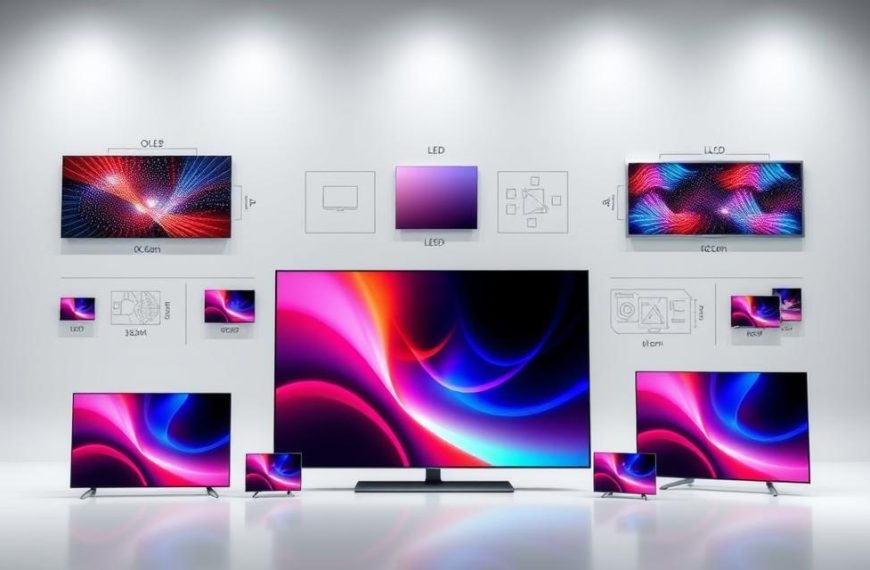This is a practical, step-by-step guide that prioritises momentum and quick wins while building a sustainable foundation. It suits people in marketing, sales, product, logistics, finance and law as well as those aiming for IT roles.
Expect short, actionable chapters that cover goal‑setting, daily actions, hands‑on lab work, structured study, and the tools and soft capabilities that speed results. You can show employers real outcomes without a computer science degree.
We define technical skills broadly: website basics, coding primers, data literacy, app interface awareness and the craft of briefing engineers. The plan gives tips, reliable media and books, plus simple exercises you can use from day one.
Measure progress with small milestones. Finish mini projects, log learnings and share results. That steady practice grows confidence, boosts your career prospects and shows employers tangible value.
Understand today’s technical skills landscape and your goals
Begin with a clear view of what employers now expect and which competencies will move your career forward.
What employers value now
Most employers want a base level of technical skills and a willingness to develop further. Practical abilities include website building, basic coding, data analysis with common tools, app interface awareness and writing clear technical briefs.
- Market rewards adaptable professionals because tools change fast; you’ll need fundamentals plus curiosity.
- Translate expectations into outcomes: baseline competence in core platforms, and the confidence to ask precise questions.
- Map role interests to tangible tasks: marketing with analytics, operations with automation, product with prototyping.
Set SMART targets aligned with jobs
Define specific, measurable goals that match job listings and quarterly targets.
| Target | Outcome | Measure | Timeline |
|---|---|---|---|
| Build a simple website | Portfolio entry | Live site URL | 8 weeks |
| Analyse a dataset | Dashboard report | 3 charts + summary | 6 weeks |
| Draft a technical brief | Clear handoff for engineers | Peer review score | 4 weeks |
“Adaptability and a questions-first approach matter more than a degree in many job listings.”
Weekly review: pick trusted sources, list recurring questions at work, then practise answers. That rhythm keeps your learning focused on real opportunities.
how to improve my technology skills: quick wins you can start today
Small daily experiments convert routine tasks into practical learning that sticks.
Use common tools with intent. Replace manual scheduling with a calendar app for group coordination. Centralise tasks in a lightweight project board and try one simple web automation this week, such as an email rule or form that saves time.
Curate your feed. Pick 3–5 trusted newsletters and 1–2 podcasts. Subscribe, then set a 20‑minute weekly slot for reading. This keeps information dense and avoids endless scrolling.
Read recent books and listen to audiobooks when commuting. Choose updated titles so examples stay relevant. Keep a note habit: log one improvement idea per app each week and track whether it saved measurable time.
Practical daily actions
- Trial with purpose: test a new tool for one week and measure one outcome.
- Micro-project: spend one hour automating a repetitive task and reflect on results.
- Analyse updates: read release notes, note the rationale and decide to keep or discard changes.
| Action | Example | Measure |
|---|---|---|
| Replace manual coordination | Shared calendar + scheduling app | Saved meeting setup time (mins/week) |
| Centralise tasks | Kanban board for project deadlines | Tasks closed on time (%) |
| One‑hour micro fix | Simple automation for reports | Hours saved per month |
“Small, regular experiments compound into real capability and confidence.”
Momentum matters: these tips turn short, daily actions into lasting progress. Keep notes, review weekly and iterate.
Build a simple home lab to accelerate hands-on learning
A compact home lab speeds learning by turning abstract concepts into real, repeatable tasks.
Begin affordably. Repurpose an old PC, add a basic unmanaged switch (second‑hand units can cost under $20) and a few patch cables. Use your router or a phone hotspot; that’s all you ’ll need to get started.
Essential kit and software
- VirtualBox or VMware for virtual machines and disposable Windows or Linux installs.
- Cloud free tiers (Azure, AWS, Alibaba) for lightweight web and network experiments.
- Remote tools such as Zoho Assist, TeamViewer and VNC Connect for troubleshooting practice.
Core exercises you can try
Install an OS from an ISO, apply updates, create users with correct permissions, then configure automatic backups and restore points. Use Registry Editor in read‑only mode to observe configuration without risk.
Run Wireshark inside a VM to capture network traffic safely. On mobile, scan the home network with Fing or Cellular Z to map devices and signal quality. These simple routines build practical technical skills and a stronger feel for real‑world data and app behaviour.
Practice by breaking and fixing: disposable VMs let you experiment, learn recovery steps, and document each example for your portfolio.
Level up with structured practice: tutorials, certifications and projects
Structured practice turns scattered learning into clear, demonstrable outcomes. Pick a curated learning path and link each module to a concrete result. That habit converts study into portfolio evidence and interview talking points.
Use online tutorials and courses
Choose a single focused path on platforms such as Udemy, Coursera, Codecademy or Zero To Mastery. Supplement paid courses with high‑quality YouTube, blogs and podcasts for varied perspective and quick fixes.
Map learning to recognised certification
Align modules with CompTIA A+ objectives to cover hardware, OS, networking and basic security. CompTIA’s free objectives guide prepares candidates for entry roles and helps recruiters understand your breadth.
Ship projects and practise deliberately
Alternate study sessions with mini builds: a static landing page, a Python script, or a PowerShell automation. Version control everything and write concise READMEs. Use project management basics—break work into tickets and run short iterations.
| Path | Outcome | Measure |
|---|---|---|
| Responsive web tutorial | Live landing page | Deployed URL + README |
| CompTIA‑aligned course | Help desk fundamentals | Module checklist + exam objectives |
| Automation micro‑project | Script or task runner | Repo, tests, and changelog |
“Explain problems simply and teach them aloud; the Feynman technique locks learning in.”
Outcome tracking: tie each project to a career goal or job role and log lessons learned. Reproduce tutorial fixes in your home lab so practical problem solving replaces passive watching.
Tools, workflows and soft skills that multiply your tech progress
A practical toolkit and clear habits multiply progress faster than ad hoc learning. Pick a small stack and standardise how you work so each hour of practice yields visible results.
Core tooling: use a fast editor like Visual Studio Code, Git for version history and an issues board for project management. Add a lightweight documentation stack so knowledge compounds over time.
Design repeatable workflows
- Create template repositories and branching strategies. This reduces setup time for new tasks and helps you learn tech faster.
- Write checklists for common tasks: deployment, rollbacks and release notes. Checklists cut errors and make changes predictable.
- Keep a changelog and a short README for every mini project so your experience is visible to others.
Troubleshooting and communication
Troubleshooting etiquette: start by restating the issue, summarise symptoms, ask targeted questions and propose next steps. Clear summaries speed first-contact resolution and build trust.
Practice remote support with Zoho Assist, TeamViewer, VNC Connect or LogMeIn in a safe VM environment (VirtualBox/VMware). Use Wireshark for network analysis and screen recordings to capture before-and-after states when you make changes.
Systems thinking: trace dependencies, check logs and isolate problems in virtual machines. That approach minimises risk and accelerates learning.
Feedback loop: after each incident or mini project, note what changed, what broke and how you adapted. That reflection turns every task into durable new skills and builds a clear portfolio that shows your evolving skill set.
Conclusion
Close your learning loop by shipping small projects and keeping clear records of results.
Pair focused study with hands‑on lab work such as VirtualBox/VMware, free OS images and cloud free tiers. Use Wireshark, Fing or Cellular Z for simple network examples and record outcomes for your portfolio.
Keep a shortlist of tools and routines that fit your work style. Spend 15–30 minutes each day on deliberate practice so time compounds into real capability and visible software or web outputs.
Include one concise example per competency—a deployed page, a data clean‑up script or a documented troubleshooting case—so hiring teams can assess your experience quickly.
Next step: pick an online tutorials course, set up a VM today and ship a tiny improvement this week to get job traction and develop technical competence.

















